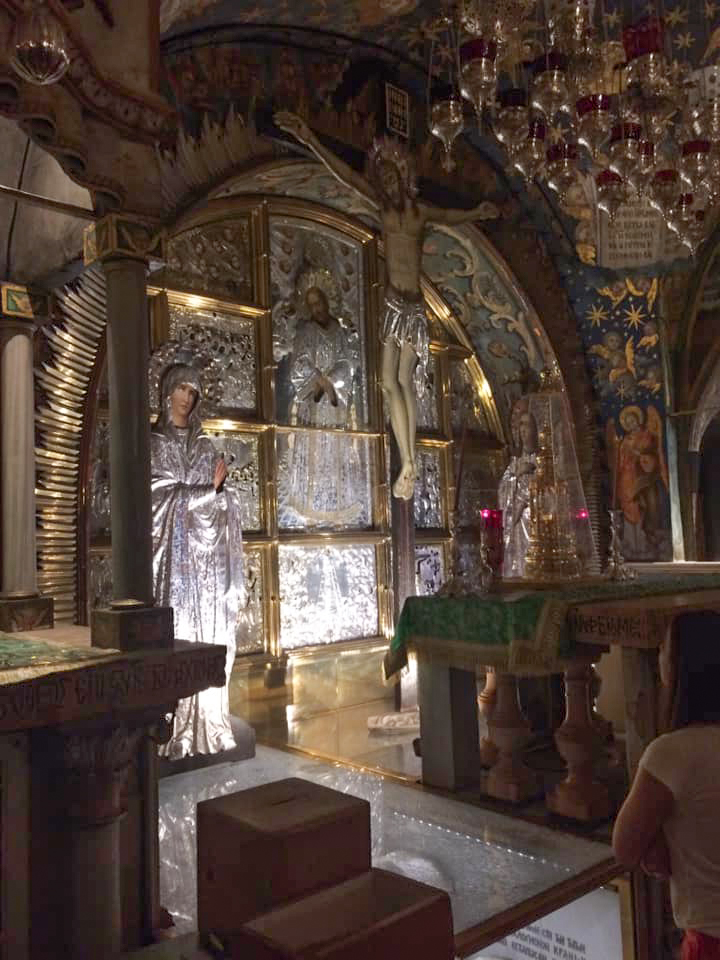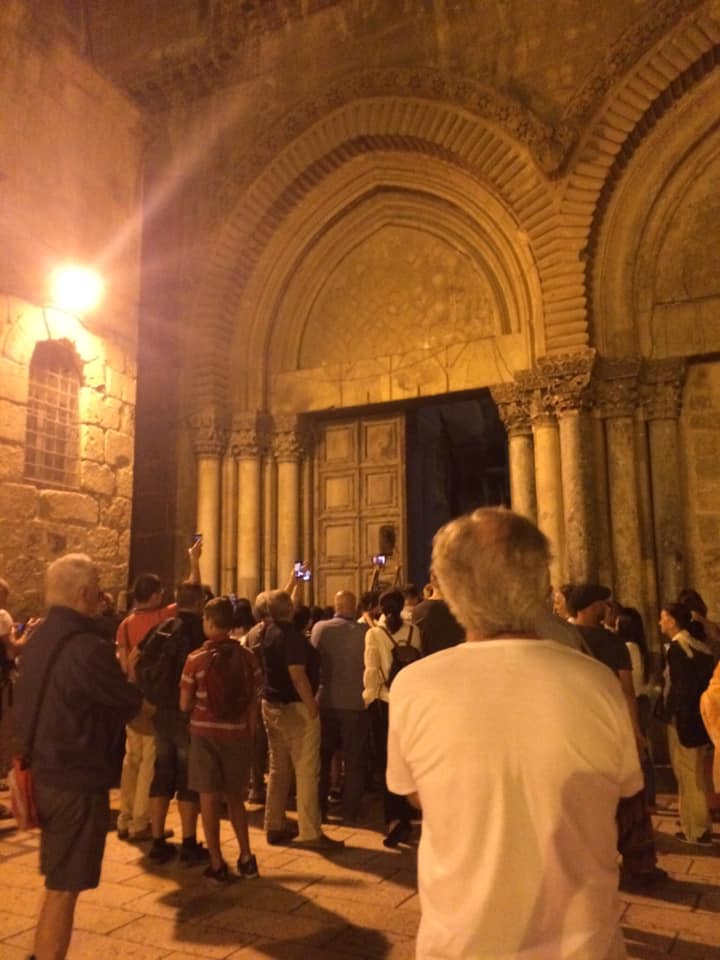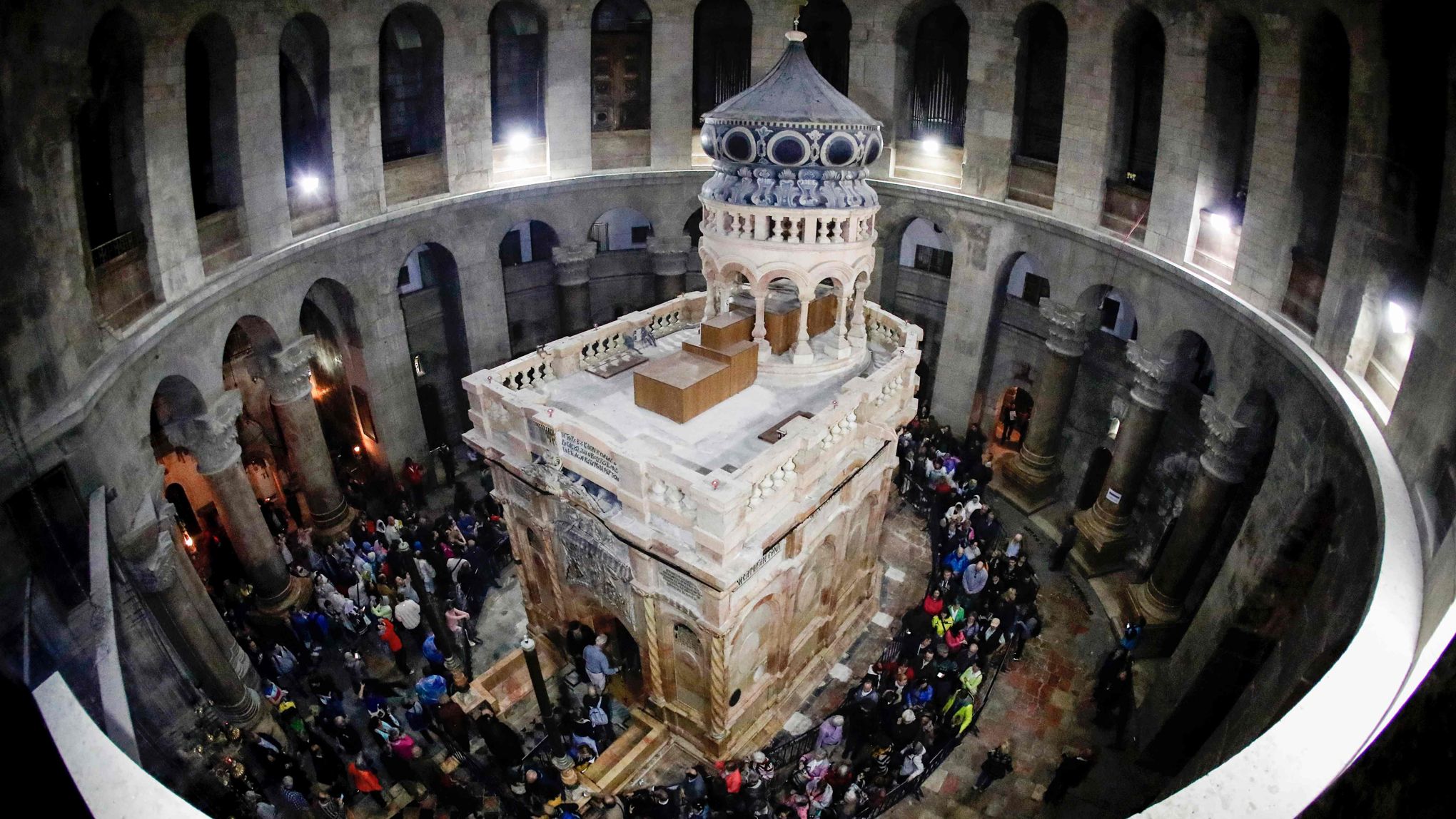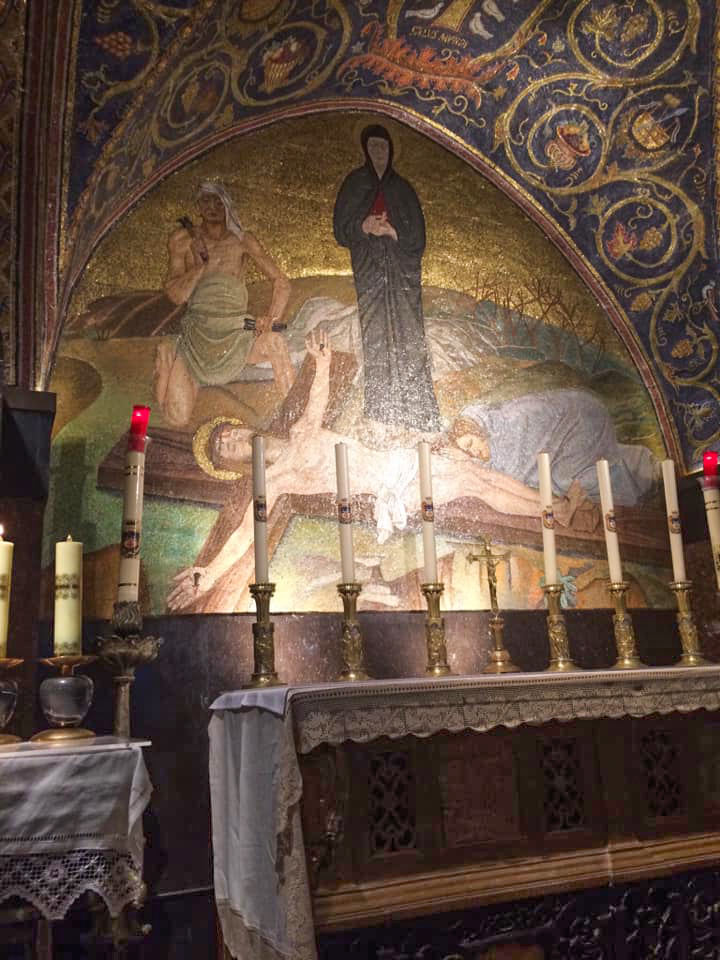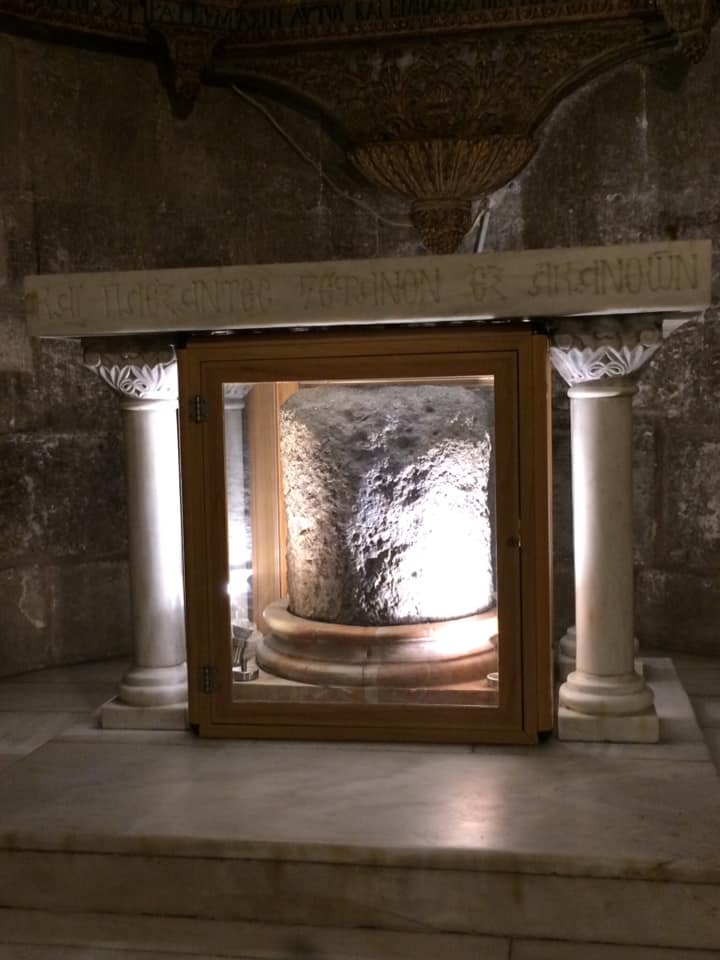|
***********************************************
Autel du Rocher du Calvaire (12ème Station de Croix). Le rocher est
visible sous le verre des deux côtés de l'autel. Sous l'autel se trouve un
trou où la croix de notre Seigneur a été élevée :
***********************************************
La porte principale de l'église du Saint Sépulcre : ***********************************************
Cour de l'Église du Saint-Sépulcre : ***********************************************
La pierre d'Onction est l'endroit où ***********************************************
L'édicule du Saint-Sépulcre. À l'intérieur se trouvent deux salles, dont
l'une contient la pierre ***********************************************
À gauche de l'autel du rocher du calvaire se trouve
la 13e station; une statue de Marie ***********************************************
La station 11 est là où Jésus a été cloué à la Croix
: ***********************************************
L'autre côté de l'autel de la Roche du Calvaire, ***********************************************
La Pierre où Jésus s'est assis pendant le
Couronnement d'Épines : ***********************************************
Ce qui reste de la Colonne de la Flagellation : ***********************************************
Derrière la vitre est le Rocher où fut élevée la Croix de Jésus :
***********************************************
This column is outside near the front door. Several
years ago it was only allowed for |
